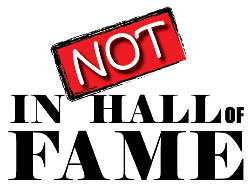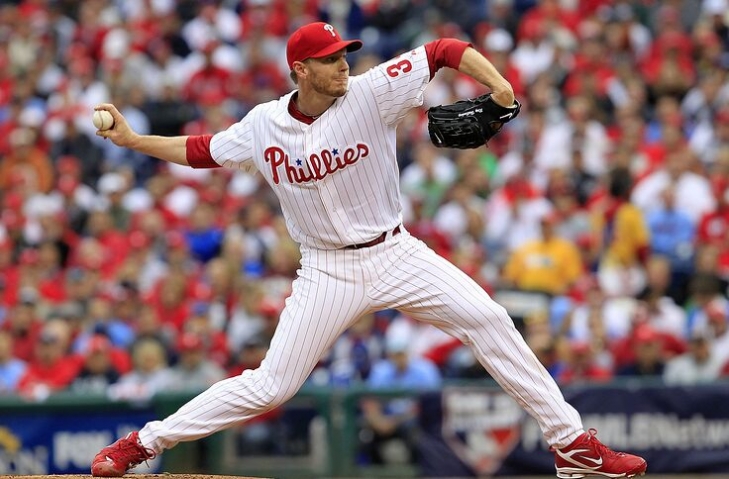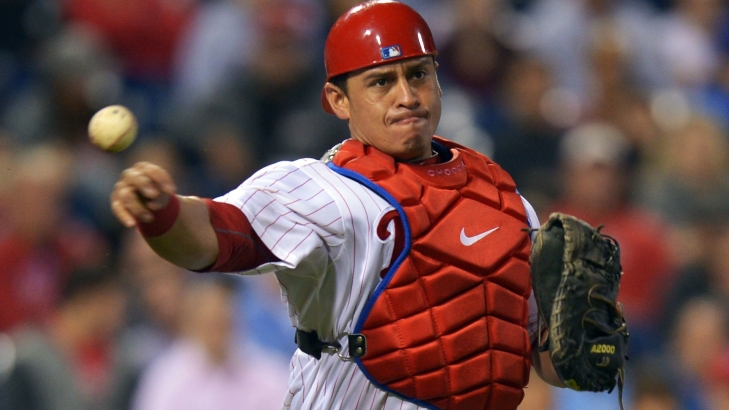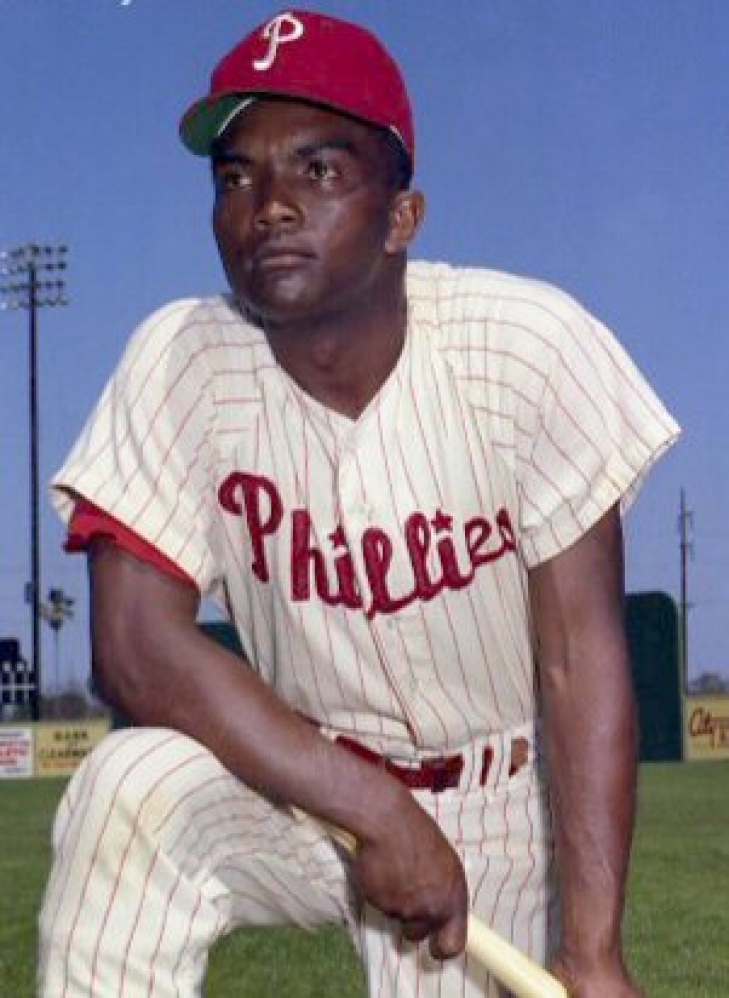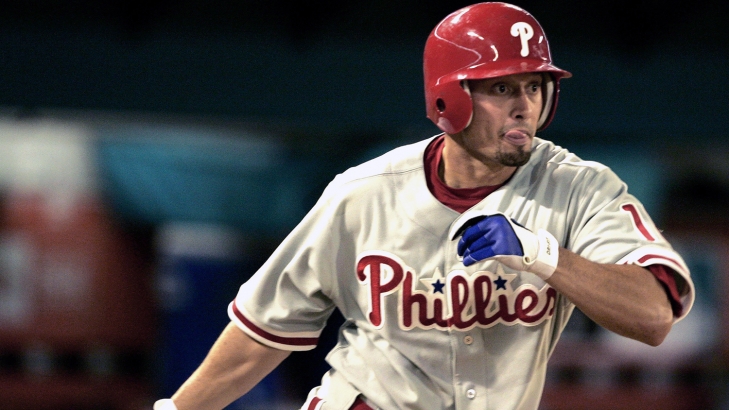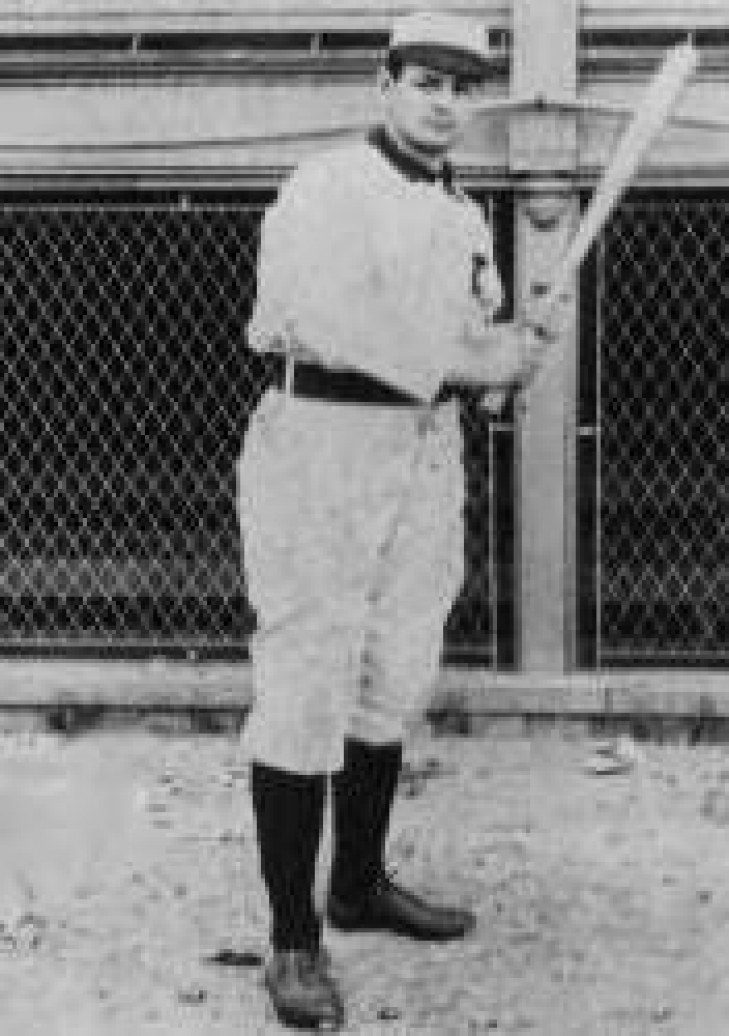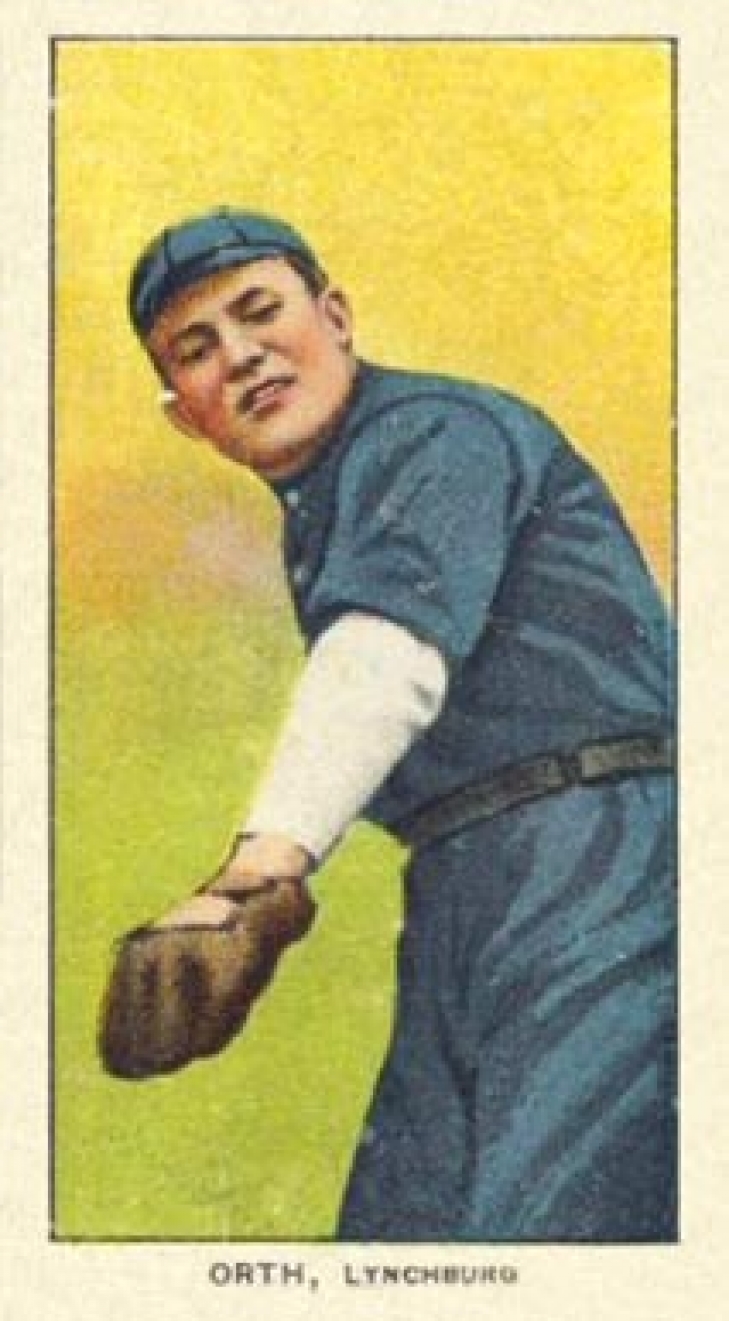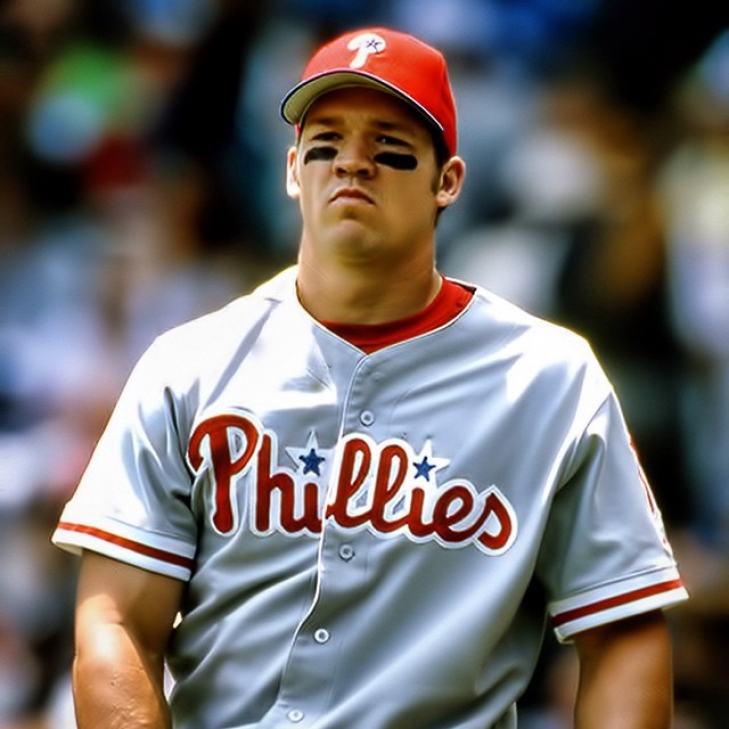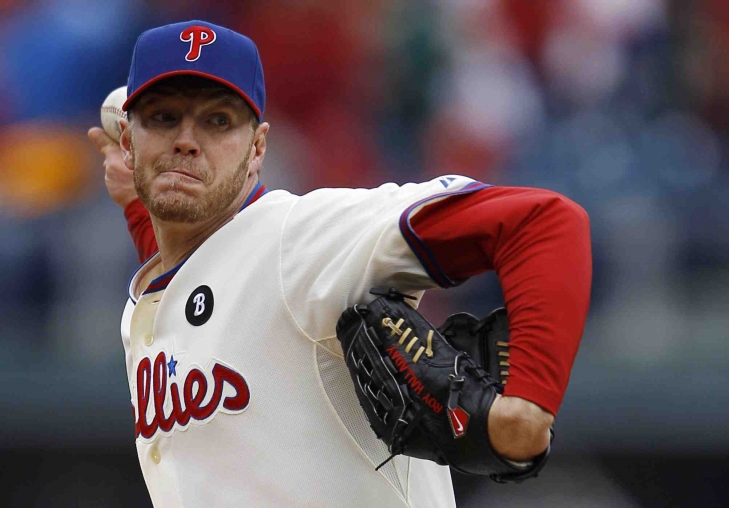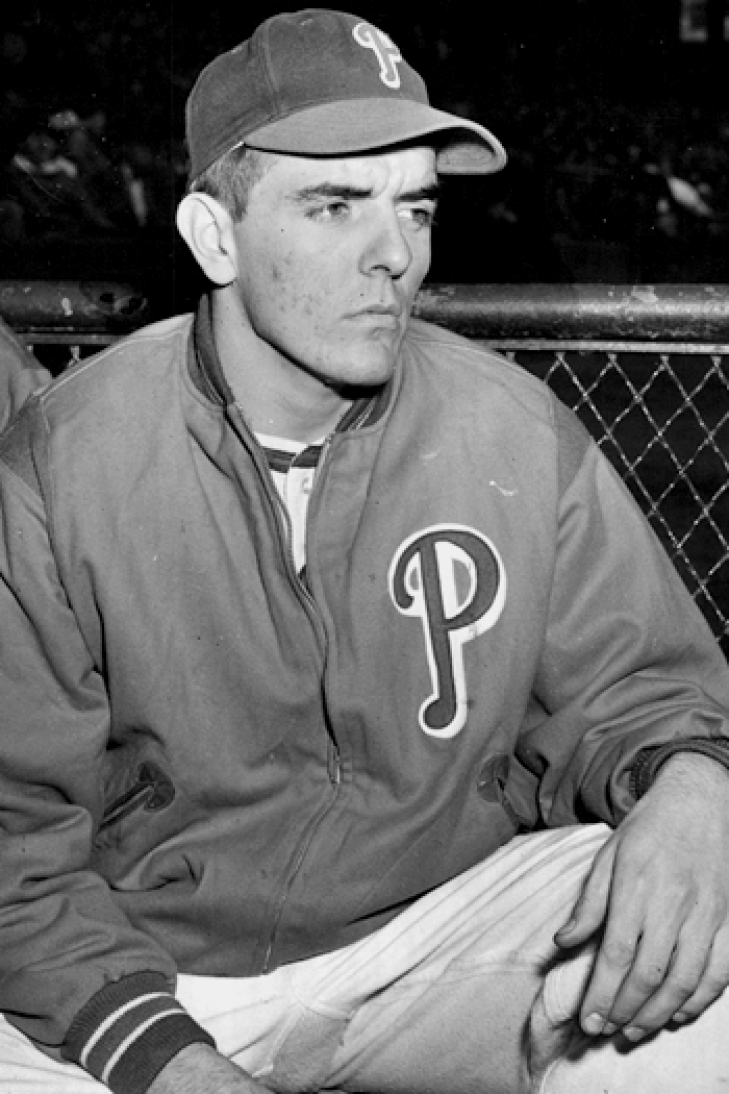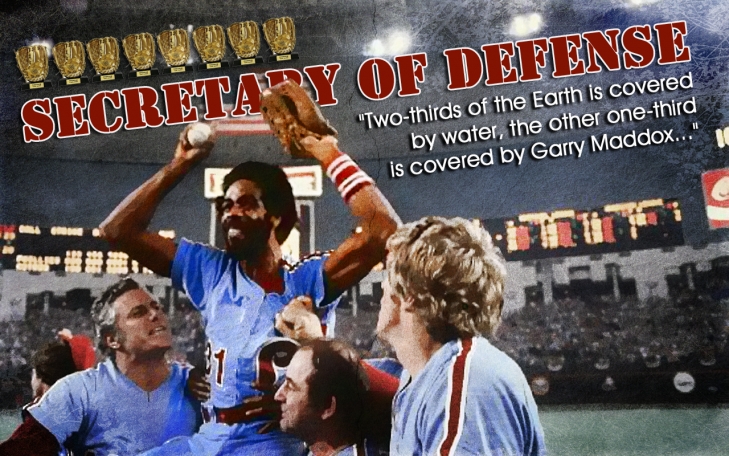The Philadelphia Phillies will retire Roy Halladay's number
Regular visitors of Notinhalloffame.com know that we are slowly working on the top 50 of every major team in the NHL, NBA, NFL and MLB. Once that is done, we intend to look at how each team honor their past players, coaches and executives. As such, it is news to us that the Philadelphia Phillies will be retiring the #34 of the late Roy Halladay, who died in 2017 plane crash.
The event will take place on May 29 on the tenth-year anniversary of his perfect game against the Florida Marlins. In the four seasons that he played for the Phillies, he would win the 2010 Cy Young Award, was a two-time All-Star, and threw a no-hitter in the NLDS against Cincinnati. Statically, with Philadelphia he had a record of 55-29 with a 3.35 ERA and 622 Strikeouts.
Halladay was inducted into the Baseball Hall of Fame in 2019. The Toronto Blue Jays have already retired his number.
In addition to the retirement of his number, a statue of Halladay will be placed in Third Base Plaza.
At present, the Phillies have retired the numbers of Richie Ashburn (#1), Jim Bunning (#14), Mike Schmidt (#20), Steve Carlton (#32), Robin Roberts (#36), and the league mandated Jackie Robinson (#42).
We here at Notinhalloffame.com would like to congratulate the family of Roy Halladay at this time.
Our All-Time Top 50 Philadelphia Phillies are now up
Yes, this is taking a while!
As many of you know, we here at Notinhalloffame.com are slowly generating the 50 of each major North American sports team. We have a new one to unveil today, that of the Philadelphia Phillies, two time World Series Champions (1980 & 2008).
As for all of our top 50 players in basketball we look at the following:
- Advanced Statistics.
- Traditional statistics and how they finished in the American League.
- Playoff accomplishments.
- Their overall impact on the team and other intangibles not reflected in a stat sheet.
Remember, this is ONLY based on what a player does on that particular team and not what he accomplished elsewhere and also note that we have placed an increased importance on the first two categories.
This list is updated up until the end of the 2016-17 Season.
The complete list can be found here, but as always we announce our top five in this article. They are:
We will continue our adjustments on our existing lists and will continue developing our new lists.
As always we thank you for your support.
43. Fred Luderus
Throughout the 1910’s, Fred Luderus would smack 130 or more Hits eight times with a total of 1,322 for the Phillies. The First Baseman would have four 10 Home Run Seasons, a huge amount in the 1910’s while also having a pair of .300 Seasons (1911 & 1915)
49. Carlos Ruiz
Carlos Ruiz was not always known as one of the top Catchers but realistically he should have been, as he was known as a favorite of Pitchers and was a solid defensive backstop. The Panamanian’s defense at the plate propelled him to three straight seasons with MVP votes, something that a player who never had over 125 Hits should have had.
46. Tony Gonzalez
39. Shane Victorino
Shane Victorino made history in 2009 as the first Hawaiian to become an All-Star and it was a well earned honor for the then Philadelphia Phillie. Victorino, also known as “The Flyin’ Hawaiian” was an exciting player who would use his speed to twice lead the NL in Triples (2009 & 2011) and would have four seasons with 25 Stolen Bases. He was a two-time All-Star and a three time Gold Glove but his career highlight had to be winning the World Series with Philadelphia in 2008.
47. John Kruk
With the Phillies, Kruk smacked 62 Home Runs and batted .309 with 790 Hits. The team inducted Kruk into their Philadelphia Baseball Wall of Fame in 2011.
42. John Titus
Before we get to the statistical reasons for placing John Titus on our list, let’s first take a look at his nicknames.
45. Granny Hamner
Granny Hamner made his debut for the Phillies at age 17 during World War II, but he was clearly talented and by the 1948 season he secured his role as the Phillies’ starting Shortstop and from 1949 to 1954 he was in the top ten in Defensive bWAR and thus provided good defense for the “Whiz Kid” teams of the early 1950’s Hamner was named an All-Star three years in a row (1952 to 1954) and had six straight 150 Hit seasons (1949 to 1954). He would have 1,518 Hits overall for Philadelphia.
50. Elmer Flick
While Elmer Flick would enter the Baseball Hall of Fame as a Veteran’s Committee inductee mostly for what he did for Cleveland, the first four seasons of his career with Philadelphia cannot be discounted.
44. Willie Jones
Jones entered the Philadelphia Baseball Wall of Fame in 1994.
41. Al Orth
Al Orth had his best seasons late in his career with the New York Giants but he was still a decent player when he arrived in Philadelphia and joined the Phillies.
33. Von Hayes
While he was not the most successful member of the Philadelphia Phillies throughout the 1980’s, there is no doubt that he was one of the most popular.
35. Scott Rolen
This by far is the most interesting ranking on the list of top 50 Philadelphia Phillies.
How cannot it not be?
28. Greg Luzinski
Known as “The Bull” for his stocky 255 pounds on his 6’ 1’’ frame, Greg Luzinski was one of the most popular players for the Philadelphia Phillies throughout the 1970’s.
36. Roy Halladay
As a Toronto Blue Jay, Roy Halladay had already won a Cy Young and would put together back-to-back seasons leading all league pitchers in bWAR. As a Philadelphia Phillie, he would do it again.
30. Larry Bowa
Larry Bowa was an excellent fielding Shortstop throughout his lengthy 2,247 Game tenure with the Philadelphia Phillies. Five times Bowa would lead all of the National League Shortstops in Fielding Percentage and was also in the top ten in Defensive bWAR five times, culminating in 1978 where he led everyone in the National League regardless of position.
29. Curt Simmons
An anchor of the 1950 “Whiz Kids” team, Curt Simmons was a solid Starting Pitcher for the Philadelphia Phillies throughout the 1950s. Simmons would represent Philadelphia in three All-Star Games and would win 14 or more Games five times for the squad.
26. Garry Maddox
38. Darren Daulton
Darren Daulton was easily one of the more popular players for the Philadelphia Phillies in the early 1990s, and he certainly deserved to be. Daulton, the Phillies Catcher for years would work his way to becoming one of the top Catchers of the NL and he would be named an All-Star in 1992, 1993, and 1995. Daulton would show rare power for a Catcher, as he had a pair of 20 Home Run/100 RB! Seasons (1992 & 1993), while he also finishing 6th and 7th in MVP voting in that time frame. It is worth mentioning that Daulton led all batters in RBIs in the 1992 season.
